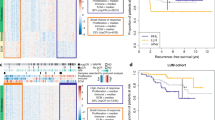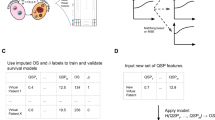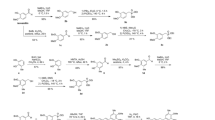Abstract
Aim:
To examine the anti-cancer effects of chamaejasmenin B and neochamaejasmin C, two biflavonones isolated from the root of Stellera chamaejasme L (known as the traditional Chinese herb Rui Xiang Lang Du) in vitro.
Methods:
Human liver carcinoma cell lines (HepG2 and SMMC-7721), a human non-small cell lung cancer cell line (A549), human osteosarcoma cell lines (MG63, U2OS, and KHOS), a human colon cancer cell line (HCT-116) and a human cervical cancer cell line (HeLa) were used. The anti-proliferative effects of the compounds were measured using SRB cytotoxicity assay. DNA damage was detected by immunofluorescence and Western blotting. Apoptosis and cell cycle distribution were assessed using flow cytometry analysis. The expression of the related proteins was examined with Western blotting analysis.
Results:
Both chamaejasmenin B and neochamaejasmin C exerted potent anti-proliferative effects in the 8 human solid tumor cell lines. Chamaejasmenin B (the IC50 values ranged from 1.08 to 10.8 μmol/L) was slightly more potent than neochamaejasmin C (the IC50 values ranged from 3.07 to 15.97 μmol/L). In the most sensitive A549 and KHOS cells, the mechanisms underlying the anti-proliferative effects were characterized. The two compounds induced prominent expression of the DNA damage marker γ-H2AX as well as apoptosis. Furthermore, treatment of the cells with the two compounds caused prominent G0/G1 phase arrest.
Conclusion:
Chamaejasmenin B and neochamaejasmin C are potential anti-proliferative agents in 8 human solid tumor cell lines in vitro via inducing cell cycle arrest, apoptosis and DNA damage.
Similar content being viewed by others
Log in or create a free account to read this content
Gain free access to this article, as well as selected content from this journal and more on nature.com
or
References
Blenn C, Wyrsch P, Althaus FR . The ups and downs of tannins as inhibitors of poly(ADP-ribose)glycohydrolase. Molecules 2011; 16: 1854–77.
Xu ZH, Qin GW, Li XY, Xu RS . New biflavanones and bioactive compounds from Stellera chamaejasme L. Yao Xue Xue Bao 2001; 36: 669–71.
Wang L, Duan H, Wang Y, Liu K, Jiang P, Qu Z, et al. Inhibitory effects of Lang-du extract on the in vitro and in vivo growth of melanoma cells and its molecular mechanisms of action. Cytotechnology 2010; 62: 357–66.
Jiang ZH, Tanaka T, Sakamoto T, Kouno I, Duan JA, Zhou RH . Biflavanones, diterpenes, and coumarins from the roots of Stellera chamaejasme L. Chem Pharm Bull (Tokyo) 2002; 50: 137–9.
Yang G, Liao Z, Xu Z, Zhang H, Chen D . Antimitotic and antifungal C-3/C-3″-biflavanones from Stellera chamaejasme. Chem Pharm Bull (Tokyo) 2005; 53: 776–9.
Liu X, Li Y, Yang Q, Liu A, Zhu X . Anti-tumor effect of alcohol extract of Stellera chamaejasme in vitro. Zhongguo Zhong Yao Za Zhi 2010; 35: 3048–51.
Kim HP, Park H, Son KH, Chang HW, Kang SS . Biochemical pharmacology of biflavonoids: implications for anti-inflammatory action. Arch Pharm Res 2008; 31: 265–73.
Cao Y, Tan NH, Chen JJ, Zeng GZ, Ma YB, Wu YP, et al. Bioactive flavones and biflavones from Selaginella moellendorffii Hieron. Fitoterapia 2010; 81: 253–8.
Silva GL, Chai H, Gupta MP, Farnsworth NR, Cordell GA, Pezzuto JM, et al. Cytotoxic biflavonoids from Selaginella willdenowii. Phytochemistry 1995; 40: 129–34.
Li J, Zhao W, Hu JL, Cao X, Yang J, Li XR . A new C-3/C-3 “-biflavanone from the roots of Stellera chamaejasme L. Molecules 2011; 16: 6465–9.
Gong JG, Costanzo A, Yang HQ, Melino G, Kaelin WG Jr, Levrero M, et al. The tyrosine kinase c-Abl regulates p73 in apoptotic response to cisplatin-induced DNA damage. Nature 1999; 399: 806–9.
Gartner A, Milstein S, Ahmed S, Hodgkin J, Hengartner MO . A conserved checkpoint pathway mediates DNA damage-induced apoptosis and cell cycle arrest in C elegans. Mol Cell 2000; 5: 435–43.
Zhang C, Zhu H, Yang X, Lou J, Zhu D, Lu W, et al. P53 and p38 MAPK pathways are involved in MONCPT-induced cell cycle G2/M arrest in human non-small cell lung cancer A549. J Cancer Res Clin Oncol 2010; 136: 437–45.
Suzuki A, Hayashida M, Ito T, Kawano H, Nakano T, Miura M, et al. Survivin initiates cell cycle entry by the competitive interaction with Cdk4/p16(INK4a) and Cdk2/cyclin E complex activation. Oncogene 2000; 19: 3225–34.
Norbury CJ, Zhivotovsky B . DNA damage-induced apoptosis. Oncogene 2004; 23: 2797–808.
Ibrahim AM, Mansour IM, Wilson MM, Mokhtar DA, Helal AM, Al Wakeel HM . Study of survivin and X-linked inhibitor of apoptosis protein (XIAP) genes in acute myeloid leukemia (AML). Lab Hematol 2012; 18: 1–10.
Liu XW, Su Y, Zhu H, Cao J, Ding WJ, Zhao YC, et al. HIF-1alpha-dependent autophagy protects HeLa cells from fenretinide (4-HPR)-induced apoptosis in hypoxia. Pharmacol Res 2010; 62: 416–25.
Cao J, Xu D, Wang D, Wu R, Zhang L, Zhu H, et al. ROS-driven Akt dephosphorylation at Ser-473 is involved in 4-HPR-mediated apoptosis in NB4 cells. Free Radic Biol Med 2009; 47: 536–47.
Dinis J, Silva V, Gromicho M, Martins C, Laires A, Tavares P, et al. DNA damage response in imatinib resistant chronic myeloid leukemia K562 cells. Leuk Lymphoma 2012; 53: 2004–14.
Luo P, He Q, He X, Hu Y, Lu W, Cheng Y, et al. Potent antitumor activity of 10-methoxy-9-nitrocamptothecin. Mol Cancer Ther 2006; 5: 962–8.
Hurley LH . DNA and its associated processes as targets for cancer therapy. Nat Rev Cancer 2002; 2: 188–200.
Kinner A, Wu W, Staudt C, Iliakis G . Gamma-H2AX in recognition and signaling of DNA double-strand breaks in the context of chromatin. Nucleic Acids Res 2008; 36: 5678–94.
Kawanishi S, Hiraku Y . Amplification of anticancer drug-induced DNA damage and apoptosis by DNA-binding compounds. Curr Med Chem Anticancer Agents 2004; 4: 415–9.
Mah LJ, El-Osta A, Karagiannis TC . GammaH2AX: a sensitive molecular marker of DNA damage and repair. Leukemia 2010; 24: 679–86.
Smart DJ, Ahmedi KP, Harvey JS, Lynch AM . Genotoxicity screening via the gammaH2AX by flow assay. Mutat Res 2011; 715: 25–31.
Cooke MS, Evans MD, Dizdaroglu M, Lunec J . Oxidative DNA damage: mechanisms, mutation, and disease. FASEB J 2003; 17: 1195–214.
Hemnani T, Parihar MS . Reactive oxygen species and oxidative DNA damage. Indian J Physiol Pharmacol 1998; 42: 440–52.
Flores ER, Tsai KY, Crowley D, Sengupta S, Yang A, McKeon F, et al. p63 and p73 are required for p53-dependent apoptosis in response to DNA damage. Nature 2002; 416: 560–4.
Yuan ZM, Huang Y, Ishiko T, Kharbanda S, Weichselbaum R, Kufe D . Regulation of DNA damage-induced apoptosis by the c-Abl tyrosine kinase. Proc Natl Acad Sci U S A 1997; 94: 1437–40.
Datta R, Oki E, Endo K, Biedermann V, Ren J, Kufe D . XIAP regulates DNA damage-induced apoptosis downstream of caspase-9 cleavage. J Biol Chem 2000; 275: 31733–8.
Arbour N, Vanderluit JL, Le Grand JN, Jahani-Asl A, Ruzhynsky VA, Cheung EC, et al. Mcl-1 is a key regulator of apoptosis during CNS development and after DNA damage. J Neurosci 2008; 28: 6068–78.
Zhang C, Cai TY, Zhu H, Yang LQ, Jiang H, Dong XW, et al. Synergistic antitumor activity of gemcitabine and ABT-737 in vitro and in vivo through disrupting the interaction of USP9X and Mcl-1. Mol Cancer Ther 2011; 10: 1264–75.
DiPaola RS . To arrest or not to G2-M cell-cycle arrest: commentary re: A K Tyagi, et al. Silibinin strongly synergizes human prostate carcinoma DU145 cells to doxorubicin-induced growth inhibition, G(2)-M arrest, and apoptosis. Clin Cancer Res 8: 3512–3519, 2002. Clin Cancer Res 2002; 8: 3311–4.
Hartwell LH, Kastan MB . Cell cycle control and cancer. Science 1994; 266: 1821–8.
Owa T, Yoshino H, Yoshimatsu K, Nagasu T . Cell cycle regulation in the G1 phase: a promising target for the development of new chemotherapeutic anticancer agents. Curr Med Chem 2001; 8: 1487–503.
Nigg EA . Cyclin-dependent protein kinases: key regulators of the eukaryotic cell cycle. Bioessays 1995; 17: 471–80.
Huang WW, Yang JS, Pai SJ, Wu PP, Chang SJ, Chueh FS, et al. Bufalin induces G0/G1 phase arrest through inhibiting the levels of cyclin D, cyclin E, CDK2 and CDK4, and triggers apoptosis via mitochondrial signaling pathway in T24 human bladder cancer cells. Mutat Res 2012; 732: 26–33.
Zurlo D, Leone C, Assante G, Salzano S, Renzone G, Scaloni A, et al. Cladosporol a stimulates G1-phase arrest of the cell cycle by up-regulation of p21waf1/cip1 expression in human colon carcinoma HT-29 cells. Mol Carcinog 2011. doi: 10.1002/mc.20872.
Harper JW, Adami GR, Wei N, Keyomarsi K, Elledge SJ . The p21 Cdk-interacting protein Cip1 is a potent inhibitor of G1 cyclin-dependent kinases. Cell 1993; 75: 805–16.
Acknowledgements
The authors gratefully acknowledge financial support from the Teachers Research Fund of Zhejiang University City College (J-12019, J-12021), the Zhejiang Provincial Foundation of National Science (Y2100682, LQ12H31001 and LQ12H30003), the Science Research Foundation of Zhejiang Health Bureau (2012KYA068 and 2012KYB066), the Zhejiang Provincial Program for the Cultivation of High-level Innovative Health talents (2010-190-4), the Scientific Research Fund of Zhejiang Provincial Education Department (Y201120633) and the Student Research Fund of Zhejiang University City College (XZ2012562091 and X2012562098).
Author information
Authors and Affiliations
Corresponding authors
Rights and permissions
About this article
Cite this article
Zhang, C., Zhou, Ss., Feng, Ly. et al. In vitro anti-cancer activity of chamaejasmenin B and neochamaejasmin C isolated from the root of Stellera chamaejasme L. Acta Pharmacol Sin 34, 262–270 (2013). https://doi.org/10.1038/aps.2012.158
Received:
Accepted:
Published:
Issue date:
DOI: https://doi.org/10.1038/aps.2012.158
Keywords
This article is cited by
-
An advanced wood preservative based on the extract of Stellera chamaejasme root with high antifungal activity
Advanced Composites and Hybrid Materials (2024)
-
Binding of sikokianin C and related C-3/C-3″-biflavanones to cystathionine β-synthase. A molecular docking study
Vegetos (2022)
-
Cytotoxicity of natural flavones and flavonols against different cancer cells
Journal of the Iranian Chemical Society (2022)
-
Bacterial community structure associated with the rhizosphere soils and roots of Stellera chamaejasme L. along a Tibetan elevation gradient
Annals of Microbiology (2018)
-
ESC reverses epithelial mesenchymal transition induced by transforming growth factor-β via inhibition of Smad signal pathway in HepG2 liver cancer cells
Cancer Cell International (2015)



